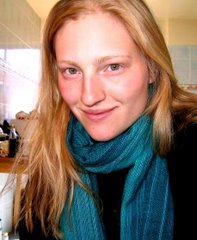So the mini-bus is basically a long van (think school field trip) rearranged to hold as many as 16 or more people. I’ve seen a whole host of brands ranging from Subaru to Ford, but I’m pretty sure these vehicles are nothing like when they were originally manufactured. They are usually pretty plain looking on the outside, and they advertise their destinations with printed cards in the front window, usually abbreviations of the more popular roads and plazas in the city. The routes are never totally set because these buses are not controlled by the government, as far as I can tell, and are instead managed by a driver in the front and another person in the back, who is usually yelling out destinations at light speed through a sliding Plexiglas window.
People flag down the mini-buses like a taxi and jump through the sliding door, while the minibus often starts driving away with the door still open. Sometimes there’s an occasional “buenos dias” (good day), as people climb to the back, flipping down one of the third seats (which is basically like a fold-down chair) in a row if they need to. I’ve seen “interior decorating” ranging from faux-leather to plush leopard print, but above all these things just speak of relentless use. The person hanging out in the back asks “Los que han subido, pasaijes por favor”, (those who have climbed aboard, fares please), and people scrounge around in their change purses for the 1B ($0.15, for a shorter trip) or 1.50B ($0.25, for a longer trip) fare. Ever since I’ve stopped having a cold, I feel like my nose has been assaulted by the range of smells in the city, especially sitting in close quarters with all sorts of working class people (wealthier citizens take radio taxis).
When someone is ready to get off, they usually say “Voy a bajar” (I am going to get down) or “A la esquina” (at the corner), which is sometimes, but not always, followed by a “Por favor” (thanks). The person in the back yells to the driver “Se va a bajar adelante” (A person is getting off ahead), and the min-bus screeches to a halt while the person hurriedly gets off. Then the bus goes sputtering off into the line of traffic, often leaving behind a thick black cloud of diesel smoke, as the manual transmission goes grinding and lurching up one steep street after another.
It took me a while to get used to the min-bus lingo, if you will, because the translation doesn’t make sense directly into English. There are all sorts of interesting ways people interact with one another on these things, and I swear it’s like its own social space. I remember the first time I got on I felt the need to make room for people at every stop and to help with the door. Perhaps my favorite moment thus far was when a rather plump lady at the back was getting off, requiring a young woman to get out and make way for her, and as she got down she laughingly apologized “Soy demasiado gordita, señora!” (I'm too fat, m'am!)






















